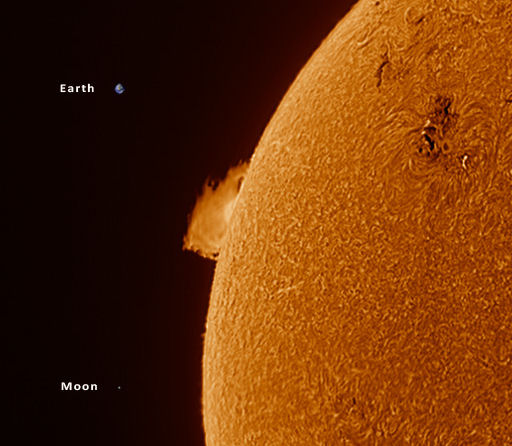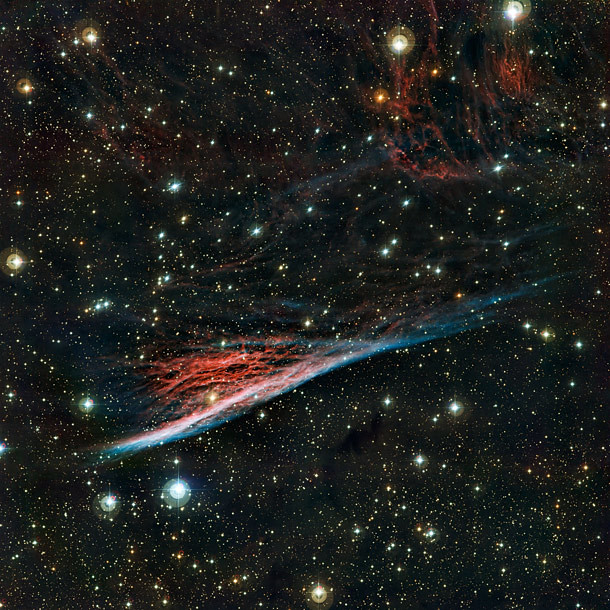Highlight mine.
_________________
Raging clouds, near and very, very far
Bad Astronomy | July 22nd, 2012 6:30 AM

I know, right? This ridiculously amazing picture … was taken by Randy Halverson of DakotaLapse.com, whose photos have been featured here on the BABlog many times…. He took this one on the evening of July 19, 2012 as part of a time lapse he’s making. The vast Milky Way galaxy glows above the red clouds illuminated by town lights from below. And on the horizon a storm rages, eruptions of lightning strikes captured in this 15 second exposure.
Funny – the Milky Way looks a bit like a cloud there, but instead of countless droplets of water held up in our air, it’s composed of hundreds of billions of stars suspended in space by their orbital motion around the galactic center. We can see only a few thousand stars with our naked eyes, and they’re all very close, most within a hundred light years of Earth. But the Milky Way is a thousand times bigger than that, and the glow we see is actually the blended light of far more stars than there are people on Earth.
And yet in this shot even that mighty power is reduced to a faint smear compared to the electric discharge of a nearby storm. The raw energy released in a bolt of lightning is staggering, but it’s essentially nothing compared to a galaxy’s worth of stars. It’s only their terrible, terrible distance that dims them.
As you juggle the events that happen in your daily life, remember this photograph. It’s easy to get distracted by smaller flashy things that are nearby, and forget about much bigger issues if they’re far enough removed. It’s a thought worth holding close.
Photo credit: Randy Halverson, used by permission.
POST 2468


 “Amazing.”
“Amazing.”








